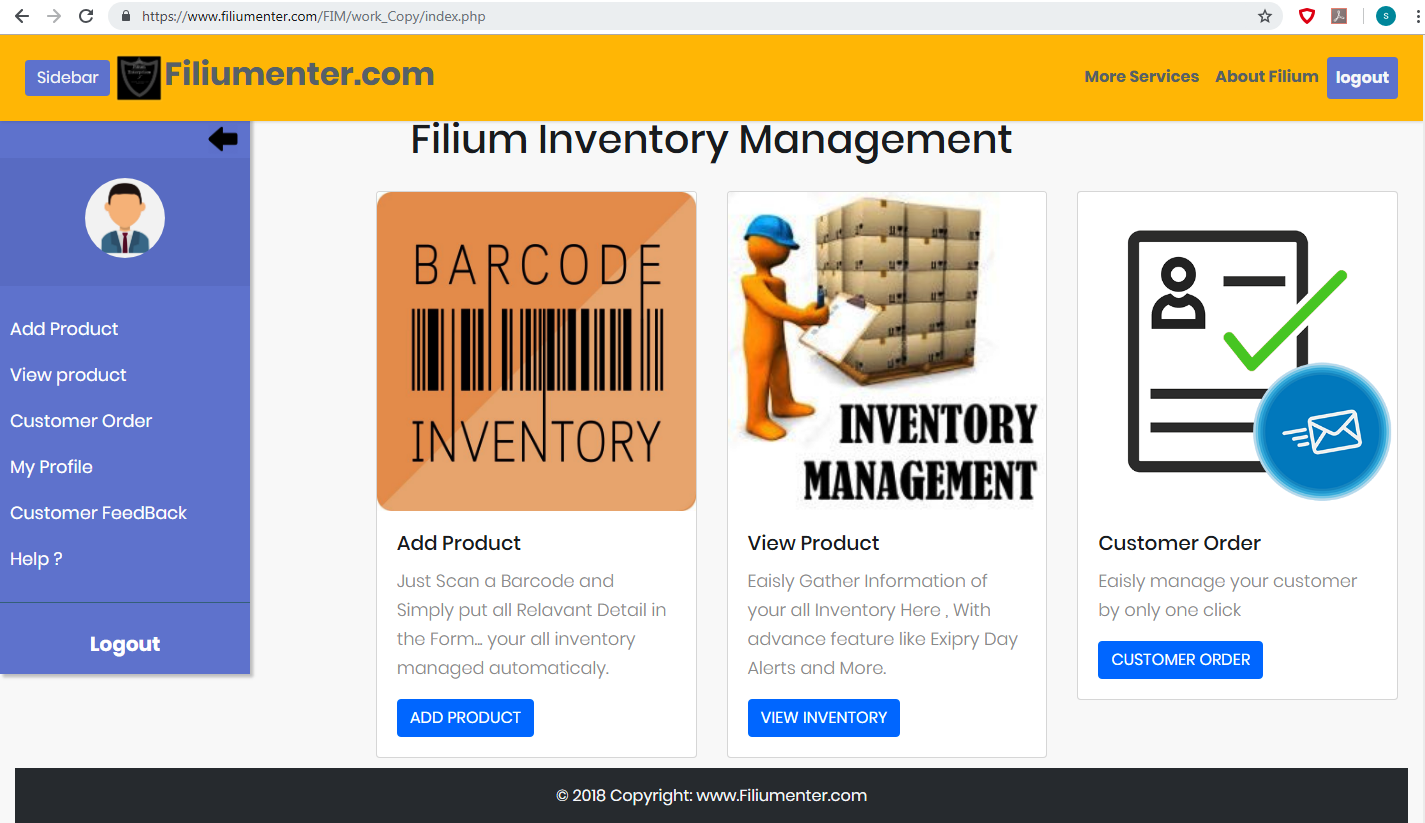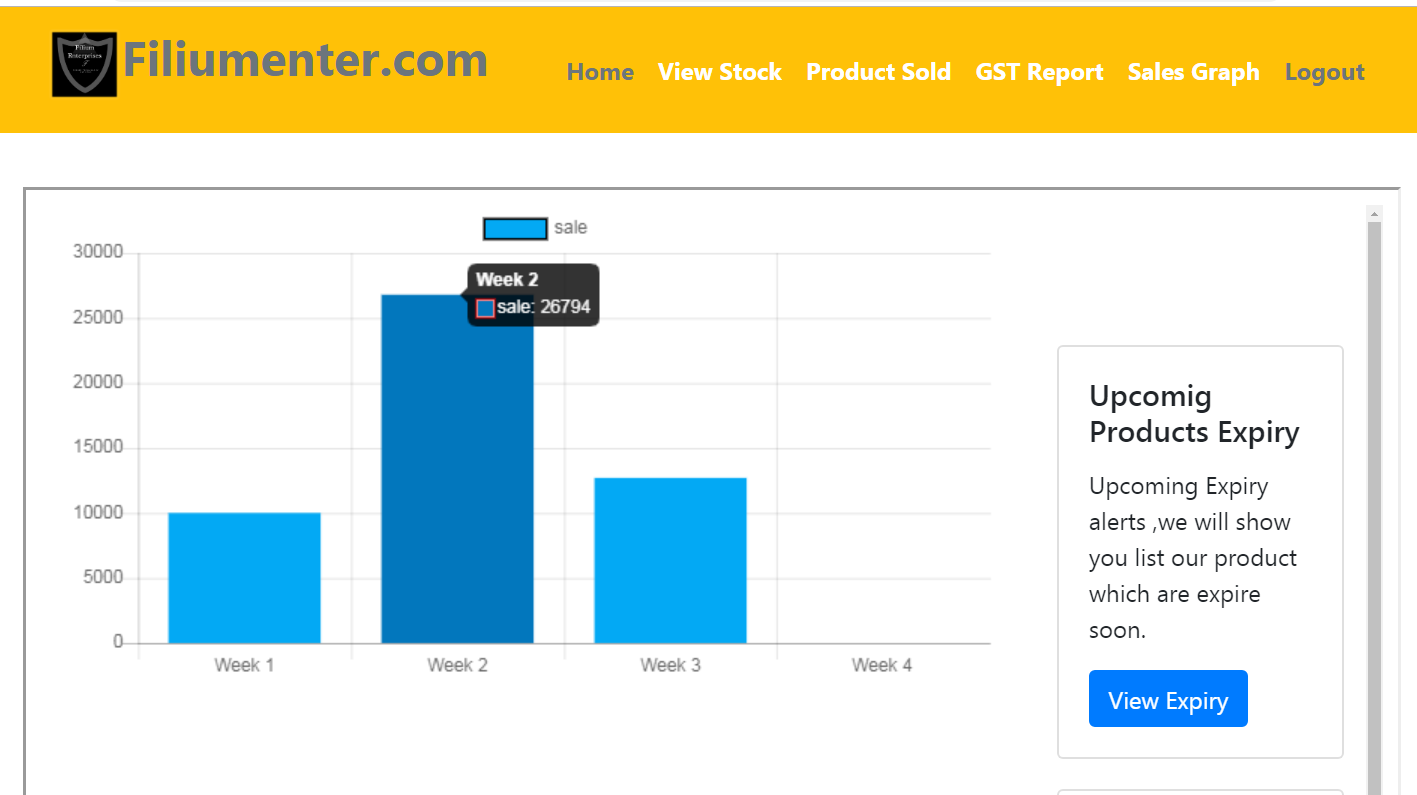Inventory Management

What is Inventory Management?
Inventory or stock management is a skill of managing and understanding the inventory or stock of a business as to fulfill the demands efficiently. In simple words, inventory management is about having right items at a right quantity, in the right place, at the right time and at the right price.
Why Inventory Management is Important:
It's crucial for any business today to understand its inventory to be efficient and be fast with its operations, while making sure everything is affordable and at profit.
Inventory management Saves Money:
Good inventory management can save you money very effectively.
- It Avoids Spoilage:
If a food product, makeup or any item with an expiry date is present in a larger than needed amount, it getting spoilt is pretty high. Good management can prevent this from happening. - It Prevents Out-dating of products:
Products can get out-dated without even expiring called dead stock. It generally happens with clothing where the cloth can go out of season, out of style, or just become irrelevant. - It saves on Storage Costs:
Warehousing can sometimes be at a good price but still cause loss if the items stored is in the wrong quantity. Managing this can make sure that this doesn't happen.
7 Inventory Management Techniques
Inventory management is a highly customizable part of doing business. The optimal system is different for different business.
These seven techniques will help in improving your inventory management.
Inventory management can be made easy by setting “par levels” for each product. Par levels are the minimum amount of product that

must be on hand at all times. As soon as the stock dips below this level, it's time to order more of them.
Par levels vary from product to product and is based on how quickly the item sells, and how long it takes to get back in stock.
This method requires some research as you would have to know how much of a product is sold in a time frame and accordingly make par levels. But on the bright side it helps you in making decisions quickly, and even other staff members can order in your behalf just by checking on the stock and the “par level”.
-
First-In First-Out (FIFO)
As the name suggests, it simply means the older product gets sold first and the newer ones later. This is useful for the products which would expire in the near future and are sold so as to avoid it getting wasted.
It's also a good idea to practice FIFO for non-perishable or non-expiring products. Those products might just become impossible to sell just by sitting idle, as the product might wear out, the packaging becomes unattractive etc. - Manage Relationships
One of the best technique is to just adapt as the things flow. This is easier said than done. However it can be done easily if you have good relations. Whether you need to return a slow selling item to make room for a new product, quickly restock on a product, need some extra storing space temporarily etc.
Having a good relationship with a supplier is very advantages as you can get products in a negotiable price.
A good relationship isn't just about being friendly. It's about good communication. Let your supplier know when you're expecting an increase in sales so they can adjust production. Have them let you know when a product is running behind schedule so you can pause promotions or look for a temporary substitute. - Accurate Forecasting
If you have a good idea of the market demands, then management becomes very easy. To predict the demand many variables are to be considered thus making it very hard to plan early on. But you can get close to it by doing the following:
- trends in the market
- guaranteed sales from contracts and subscriptions
- planned ad spend
- upcoming promotions
- last year's sales during the same time period
- current year's growth rate
- seasonality and the overall economy
There can be more way's to make a more accurate prediction,
so keep your mind open.
- Prioritize With ABC
There are always products which need more attention than others. ABC analysis is used to prioritize and manage effectively. Separate out products that require a lot of attention from those that don't. This is done by going through your product list and adding each product to one of three categories:
- High-value products with low frequency of sales
- moderate value products with a moderate frequency of sales
- low-value products with a high frequency of sales
Items in category A require regular attention because their financial impact is significant but sales are unpredictable. Items in category C require less oversight because they have a smaller financial impact and they're constantly turning over. Items in category B fall somewhere in-between.
- Contingency Planning
Many issues related to inventory management may also arise. These types of problems can cripple unprepared business. For example: - Your warehouse doesn't have enough room to accommodate your seasonal spike in sales
- A slow moving product takes up all your storage space
- Your manufacturer runs out of your product and you have orders to fill
- Your manufacturer discontinues your product without warning
- Your sales spike unexpectedly and you oversell your stock
- A miscalculation in inventory means you have less product than you thought
- You run into a cash flow shortfall and can't pay for product you desperately need
It's actually not the matter of 'if' the problem arises, but 'when'. It is therefore best to plan and figure out where your risks are and prepare a contingency plan. How will you react? What steps will you take to solve the problem? How will this impact other parts of your business? Remember that solid relationships go a long way here.
- Regular Auditing
Regular reconciliation is vital. In most cases, you'll be relying on software and reports from your warehouse to know how much product you have stock. However, it's important to make sure that the facts match up. There are several methods for doing this. - Physical Inventory
This is the straightforward method of counting all your inventory at once. Many businesses do this at their year-end because it ties with accounting and filing income tax. Although physical inventories are typically only done once a year, it can be incredibly disruptive to the business. If any discrepancy is found, it is generally very difficult to find and pinpoint the issue when you're looking back at an entire year. - Spot Checking
If checking only once at the end of the year is very troublesome, you may want to start spot checking throughout the year. This simply means choosing a product, counting it, and comparing the number to what it's supposed to be. In particular, you may want to spot check problematic or fast-moving products. - Cycle Counting
Instead of doing a full physical inventory, some businesses use cycle counting to audit their inventory. Cycle counting is spread throughout the year, rather than counting at year-end. Each day, week, or month a different product is checked on a rotating schedule. Generally, items of higher value is counted more frequently.
FAQs
1. What is an inventory?
The goods and materials that a business holds for the ultimate goal of resale is called Inventory.
2. What is management?
The administration of an organization, whether it is a business, a not-for-profit organization, or government body.
Management operates through five basic functions:
Planning: Deciding what needs to happen in the future and generating plans for action, or simply deciding or planning in advance.
Organizing (or staffing): Having and maintaining enough human and nonhuman resources being put up in the right place.
Coordinating: Creating a structure through which an organization's goals can be accomplished.
3. What is inventory management?
Inventory or stock management is a skill of managing and understanding the inventory or stock of a business as to fulfill the demands efficiently. In simple words, inventory management is about having right items at a right quantity, in the right place, at the right time and at the right price.
4. What is stock rotation?
It's the practice of moving and rotating the products from one part of the store to another on a regular basis. This is most commonly used in retail stores generally for food products. For example, sometimes regular customers may know exactly what theywant and where to look for them. This results in customers going straight to the product they seek and they do not look at other items kept up for sale. To make sure this practice does not take place, stores will rotate the stock's location to make the customers look around the aisle and check all the items to look for what they want. This is in hopes the customers will pick up items they would not normally see.
5. What is Inventory Credit?
The stock or inventory which is used as collateral to raise finance is called inventory credit. Inventory credit is very useful for some places like the developing countries where banks may be reluctant to accept traditional collateral.